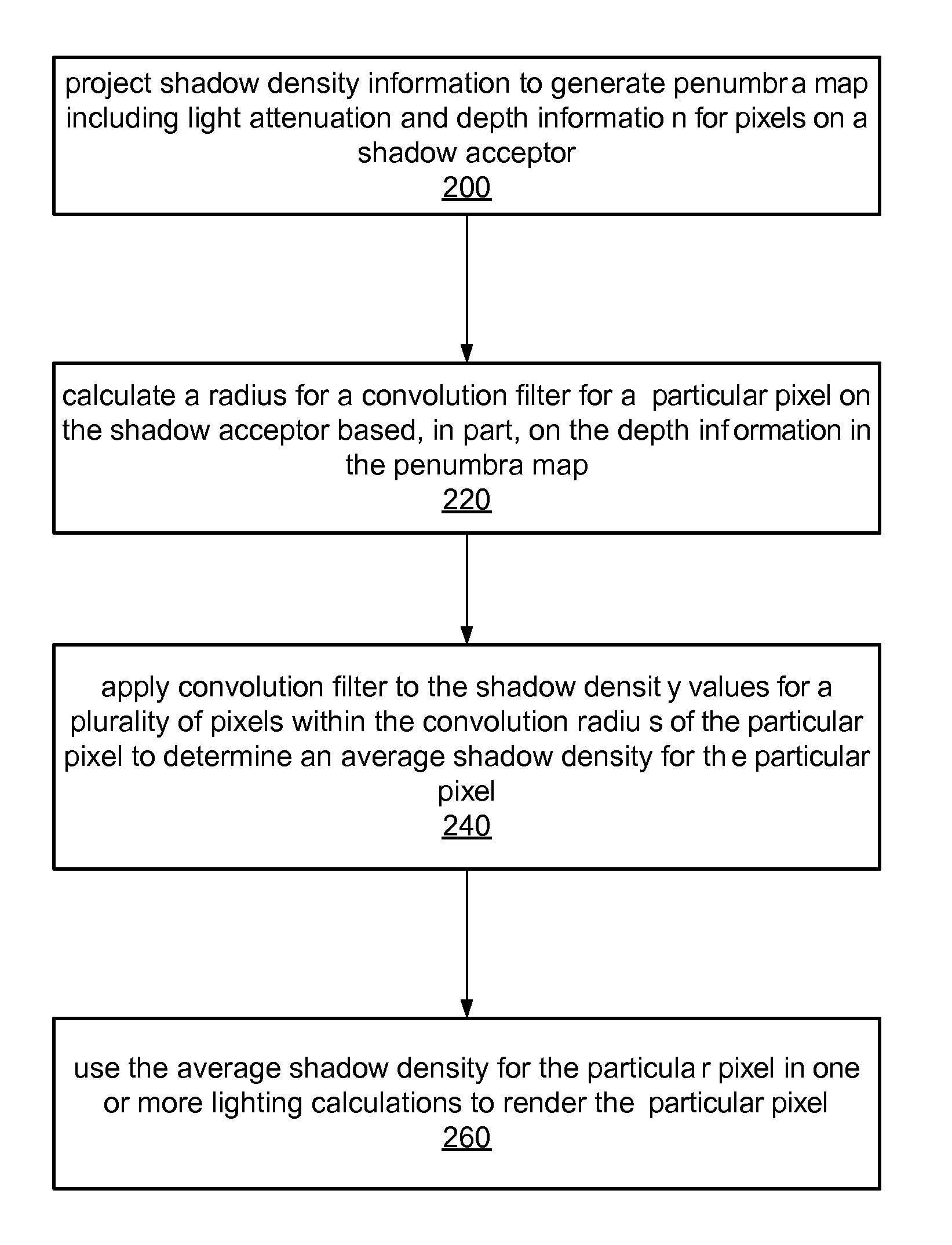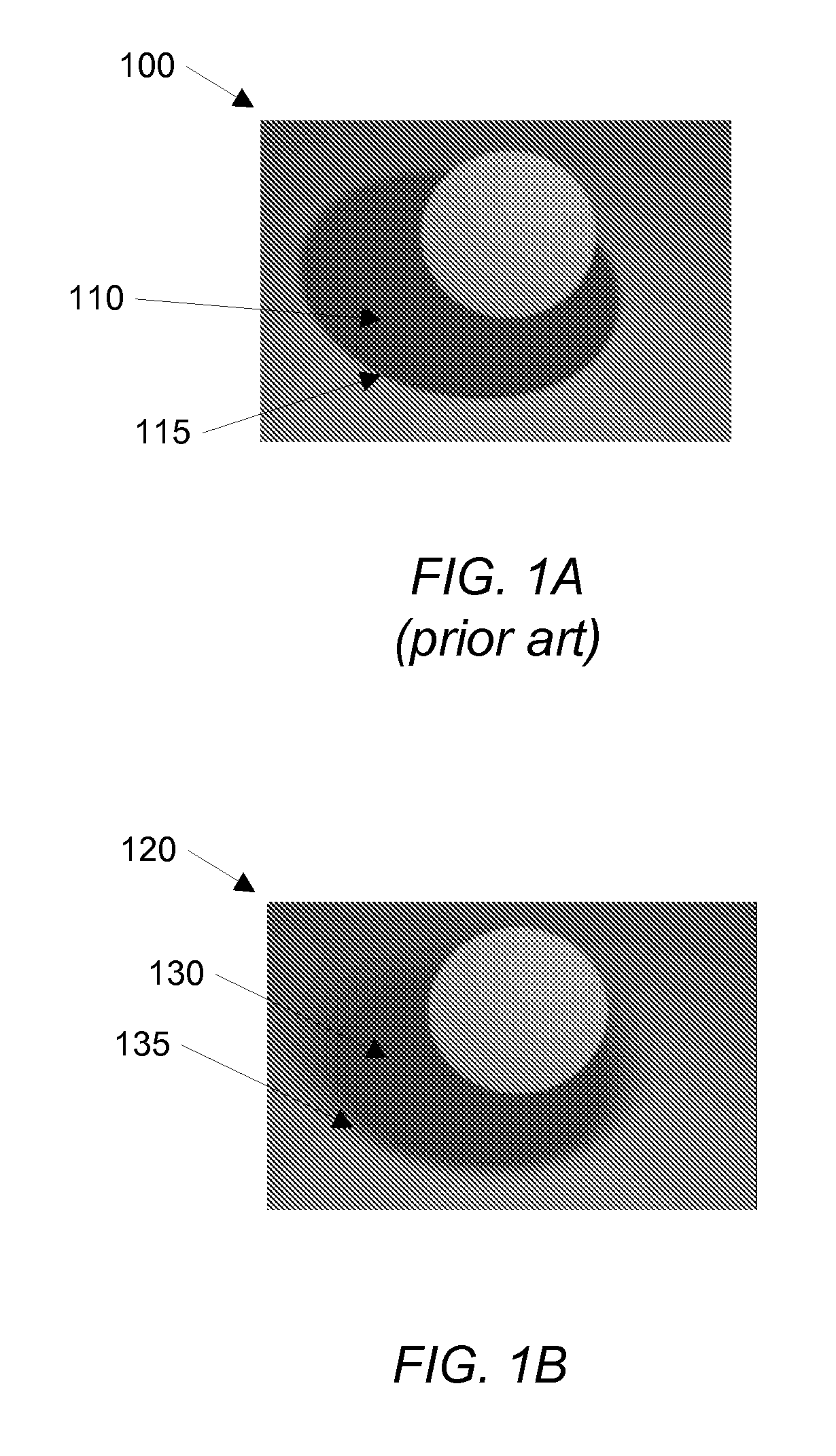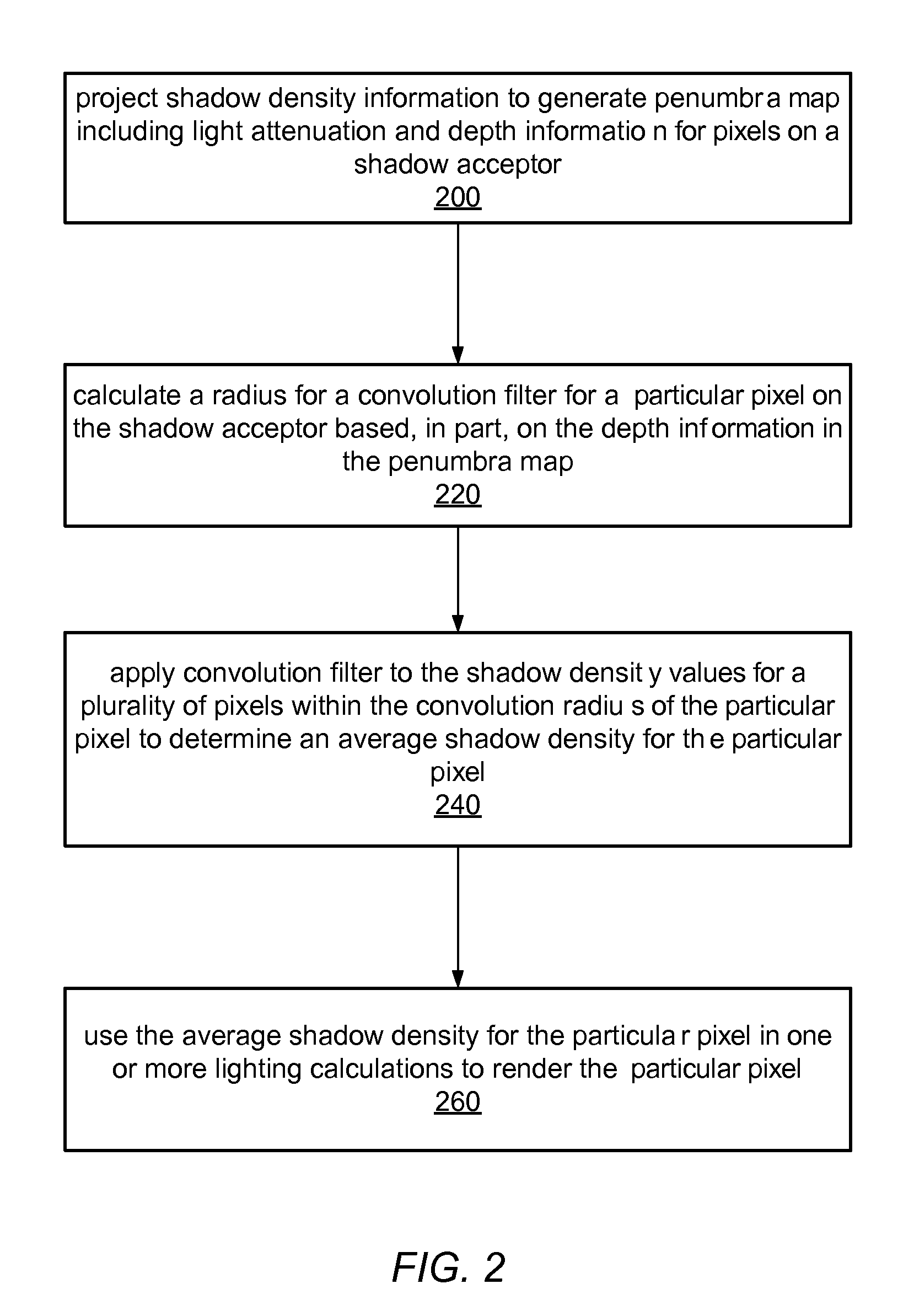Calculating shadow from area light sources using a spatially varying blur radius
a technology of area light sources and blur radius, applied in the field of computer systems, can solve the problems of general execution cost and inability to meet the needs of calculating the light from area light sources, and achieve the effect of reducing the amount of ligh
- Summary
- Abstract
- Description
- Claims
- Application Information
AI Technical Summary
Benefits of technology
Problems solved by technology
Method used
Image
Examples
Embodiment Construction
[0021]As noted above, shadows from genuine, physical lights have a penumbra region, in which the light is only partially hidden from the shadow acceptor. The intensity of this region may be calculated using an approximation of the amount of light source visible. While the techniques described herein may be used with area lights of any, arbitrary shape generally, for ease of discussion, the examples and exemplary embodiments described and illustrated include spherically shaped light sources. As will be described in more detail below, calculating the intensity of a penumbra region may be performed on a graphics processing unit (GPU), such as by using projected intensities from a shadow-attenuation, or shadow density, map. Thus, a shadow, as projected from a area light source, may be calculated on a GPU using fragment, or pixel, shader programs that calculate the light intensities for each pixel being rendered.
[0022]FIG. 1A illustrates an image 100 that includes a shadow 110 generated ...
PUM
 Login to View More
Login to View More Abstract
Description
Claims
Application Information
 Login to View More
Login to View More - R&D
- Intellectual Property
- Life Sciences
- Materials
- Tech Scout
- Unparalleled Data Quality
- Higher Quality Content
- 60% Fewer Hallucinations
Browse by: Latest US Patents, China's latest patents, Technical Efficacy Thesaurus, Application Domain, Technology Topic, Popular Technical Reports.
© 2025 PatSnap. All rights reserved.Legal|Privacy policy|Modern Slavery Act Transparency Statement|Sitemap|About US| Contact US: help@patsnap.com



